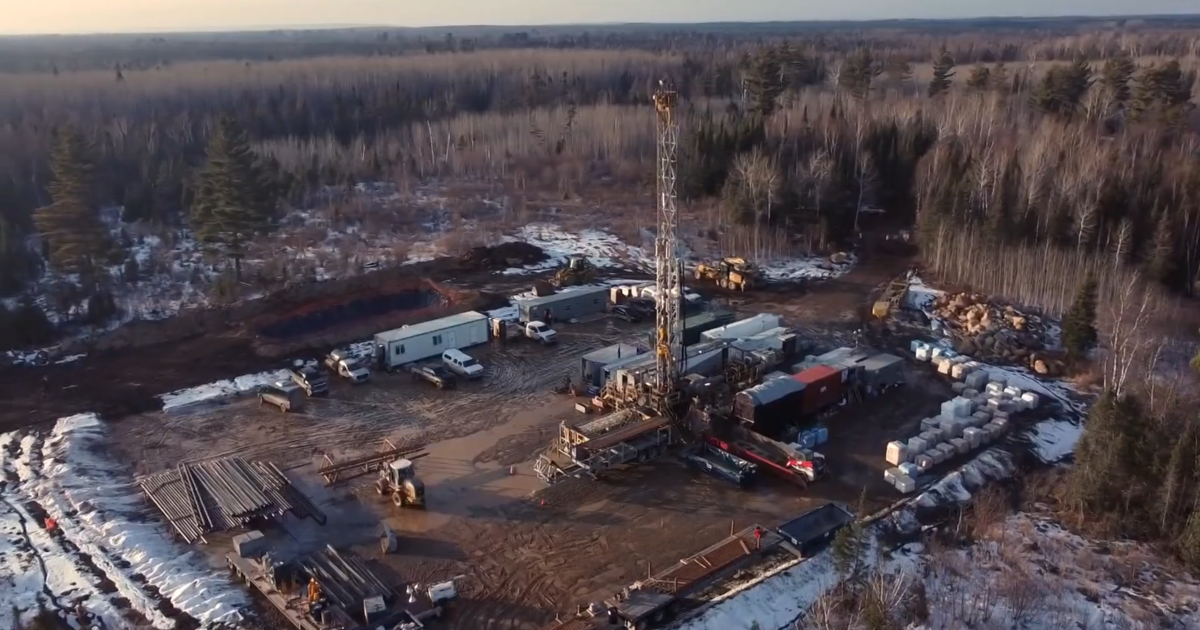“A dream. It’s perfect”: Helium discovery in northern Minnesota may be biggest ever in North America::For a century, the U.S. Government-owned the largest helium reserve in the country, but the biggest exporters now are in Russia, Qatar and Tanzania. With this new discovery, Minnesota could be joining that list.



it’s much more complicated than that, and the most useful property of helium is its low boiling point. it goes like this:
first, you start with natural gas that has some nitrogen, some water, some helium, some carbon dioxide, heavier hydrocarbons, thiols, dust, and such. mechanical filtering gets rid of dust and mist, water, carbon dioxide and thiols are removed chemically, heavier hydrocarbons are removed on active carbon. now we have mix of methane, ethane, hydrogen, helium, nitrogen, traces of carbon monoxide, dioxide and water. this all is cooled down, first just to freeze out these trace amounts of water and carbon dioxide, then to liquefy what is left.
next this liquid mixture is put through massive distillation tower, allowing for separation of mainly nitrogen and methane. this nitrogen and methane are end products, some are sold as liquids but most are regasified in order to cool down incoming gas and save some energy. another product is helium concentrate, at this point it can be 50% to 80% with rest being nitrogen but this depends on exact facility.
then, some extra air is added to helium concentrate, it’s heated up and passed over catalyst bed. this is done in order to burn out hydrogen and any hydrocarbons, because separating oxygen from helium is much easier than separating hydrogen from helium. products of this burn are water and carbon dioxide that can be separated chemically. then again it’s all cooled down, nitrogen and oxygen are liquefied, then it’s all cooled down further and from some 30K on it’s just helium being circulated as gas because you can’t liquefy it like any other gases, it needs a special process. on every pass, with extensive recycling of heat some part of it is liquified and this is the final output, 5N liquid helium.
at least that’s how it works in a facility built in 70s in then eastern block. now it supplies half of europe and a research facility situated nearby. i suspect it was built with at least some military applications in mind during this time, namely helium is used for pressurizing hydrogen tanks of rockets, but also soviets toyed with an idea of using gas lasers militarily. this requires a supply of helium, and a supply of neon is also a nice thing to have in this situation. neon was produced in Azovstal cryogenic oxygen factory serving nearby steelworks, as it can be separated from air. it ended up providing virtually all neon for semiconductor manufacturing in the world, but from what i understand there are alternative suppliers by now
But compared to extracting other gases (which virtually all of them aren’t finite) it is that easy
it’s pretty fucking hard. only six countries in the world produce helium, and you get engineering challenges that don’t exist anywhere else. for example you can’t use any grease on helium turbine bearings in the lower temperature stages because all of them freeze, so the solution is to use gas lubricated bearings. this is some serious precision engineering that has to work in extreme conditions
it’s also hard because the simpler way of liquefying gases, like the one used for nitrogen that uses no moving parts in the coldest part, fails for helium, this makes liquefying helium harder than any other gas. it’s also hard because of limited availability. it’s hard because of massive capital costs and lots of custom machinery. it’s hard because of scale required. about any other compound can be manufactured without at least some of these problems
Rare finite resources aren’t refined in a lot of places…